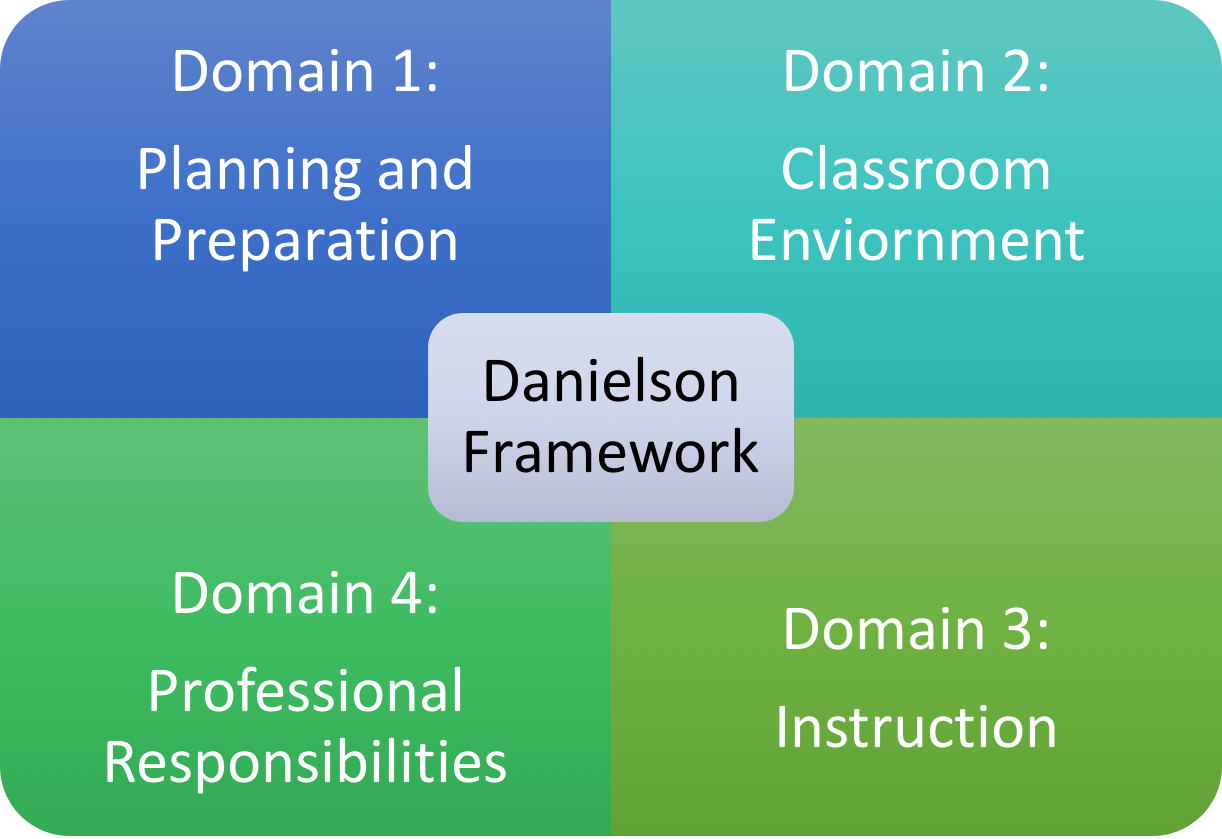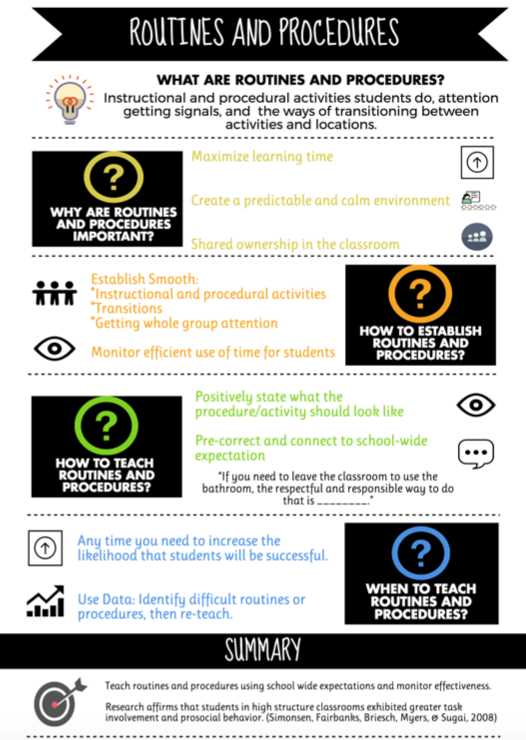Effective Classroom Practices
Procedures and Routines
Establish smooth operation of instructional and procedural activities, transitions, and getting whole group attention
"When teachers establish and consistently follow routines, the routines, not the teacher, become the "class manager"." ~Simonsen and Meyer
This video offers an example of establishing role-assignments in a group to give answers, as well as pre-correcting the expectation of this.
Listen to this narrated slideshow to learn more about establishing procedures and routines
Connection to Appraisal

Danielson Framework
- Students knowing what to do and where to move (2c)
- Smooth functioning of all routines (2c)
- Little or no loss of instructional time (2c)
- Students play an important role in carrying out the routines (2c)
- Body language indicative of warmth and caring shown by teacher and students (2a)
- Physical proximity (2a)
Strategies to Try:
- Make a list of procedures you expect students to follow
- Develop specific behavioral steps
- Include student input in the development process
- Teach procedures using examples and non-examples
- Students model appropriate behavior
- Establish, teach and practice an attention getting signal
- Provide pre-corrections prior to utilizing procedures
- Post visuals near procedure area
- Time transitions or specific procedures to reduce loss of instructional time
- Ask a coach or colleague to observe and give feedback
- Observe a colleague’s classroom and reflect on practice
